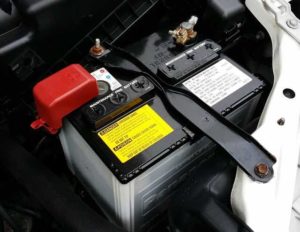
Table of Contents
Top Battery Testers & Why They’re Awesome:
In 2018, gone are the days where a voltmeter reading of a battery was enough to tell if it was good or not. Modern cars rely more and more on a strong battery with the correct cold cranking amps available at all times. Now, you need a battery tester in order to test batteries effectively. Don’t worry they don’t break the bank, and I will cover the top battery testers of 2018 for all different budgets.
Voltmeters Battery Tests VS. Battery Testers: What is the difference?
I used to think that to test a 12v automotive battery all I needed to do was hook up my voltmeter and check for good voltage. The rule of thumb used to be 12.4-6 volts with a vehicle not running meant that the battery is good. Or more simply put, if the battery would hold between 12.4-8 after being charged it was good.
That may be a decent start, but a voltmeter test won’t always get it right.
That is because the voltmeter is not putting the battery under any stress or a “load.” It also isn’t able to test the actual amperage available to your car when it is put under load. There are two different types of battery testers, and both use more in-depth tests to make sure your battery is actually capable of running your car properly.
What is a battery tester:
This is why tool companies and professional technicians use what’s called a “battery tester” to determine if a battery is good. Battery testers place the battery under a load and check to make sure it is still up to capacity.
All batteries over time get weaker, and modern cars are more and more finicky. Without a good strong battery, you can have many problems in a car that show themselves as complicated electrical issues.
Having a car battery tester can be a great way to know when your batteries need to be replaced, and when the problem lies elsewhere. I will cover the top-rated battery testers, how they work, and why they are important.
I will also give buying recommendations based on whether you work on only your own cars, weekend mechanic, or if you want the best of the best and work on cars for a living.
Top Battery Testers on Amazon from Least Expensive to More Pricey:
- Schumacher BT-100 100 Amp Analog Battery Load Tester (Cheap & Works Well)
- 100 amp load test – for 12-volt batteries, 50 amp load test – for 6-volt batteries
- Tests 6 and 12-volt batteries – up to 1000 CCA
- Test load, battery condition, starter motor draw, and complete charging system diagnosis
- Very Inexpensive and Very Good Reviews (click here to check reviews)
- **First time use it will start smoking. It will also get very hot. This is normal, and it will only smoke during the first time use.
-
OTC 3182 130-Amp Digital Battery Load Tester (If you want digital)
- Works up to 130 Ampere digital battery load tester (30 more amps than the Schumacher BT-100)
- Also does 6 and 12-volt batteries
- Large easy-to-read display
- Digital Versus Schumacher (which is Analog readout)
- Slightly More Expensive but a little heavier duty and gives a digital readout. Check Price on Amazon & Reviews Here.
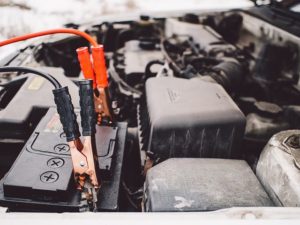
Slightly Better & More Expensive Battery Tester (Step Below Professional):
-
- Ability to Print Receipt for Customers With Diagnosis Of Their Battery
- Fully Digital
- CCA 100-3000
- 12v-24v battery load tester
- car cranking and charging system analyzer
- Comes With A Printer Built In
What The Professionals Recommend In 2018 For Battery Tester (Not Super Expensive):
1. Midtronics PBT300
This is the cheaper PBT-100 Model (check price on Amazon here) which is also a good tool (just not really professional level)
Simple. Reliable. Works Well.
- Expanded measurement range from 100-1400 CCA
- Accurate battery test decision in seconds Shows available power in CCAs
- Bad cell detection Tests discharged batteries
- High/low voltage capture Voltmeter mode for testing both the starter and the charging system
- Bad Cell detection
- For use with individual 12-volt automotive starting batteries.
- Proven conductance technology and test algorithms required for warranty testing
- Uses capacitive analysis not load testing to get an accurate result w/ no heat or smoking (lasts longer / more accurate)
** You must input the CCA of the battery you want to test in order to get an accurate result.
Do I need to use a battery tester or can I just use my voltmeter:
If you’re working on a lot of modern cars and troubleshooting electrical problems you need to be using a battery tester.
There is a reason all shops have one, and most technicians have their own personal one.
It backs up your diagnosis that the battery is bad, and can find faults that the voltmeter won’t pick up.
I am sure you could do a pretty good test with a voltmeter and putting the engine under load (like freeze frame on a fluke and starting the car).
I just lean more towards having a specialized tool that does all that for me and gives me an accurate result.
Battery testers take the guessing out of testing batteries with a Voltmeter.
I would bet you $100 million dollars many people get batteries replaced before they’re actually bad. Or they spend 1000’s chasing electrical problems only to find out they had a bad battery, to begin with.
With all the electronic components on modern cars these days, the difference between a good battery and a bad battery can mean that car running right or totally off.
Save yourself a headache and for as little as $30 you can get a battery tester to see if your battery is good or not.
I’m Not Sure If My Battery Is Failing, But I Don’t Want to Buy A Battery Tester To Use Once:
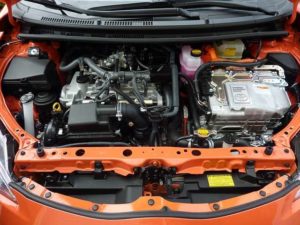
Sure. I understand. Saving money is better than spending money.
Here is what you do if you don’t have a battery tester and don’t want to spend the money on one.
Make sure your battery is fully charged using a good high-quality charger. Or by driving the car around if you’re sure the alternator is working properly. Check for around 14v running in your car at the battery to see if the charging system is working.
Then drive your battery over to a shop, and ask them to use their battery tester.
Best to call ahead and ask what shops have one, and what they will charge you to do that. It might be free if you ask kindly.
You can also go to Autozone or O’reillys and have them test your battery. However, I do not like going to these stores and often have problems with people working there.
I don’t blame the employees for not really caring. They don’t get paid enough to care, at least where I live (California) and they make it appear in their customer service.
In reality, I have had to wait a day for them to even hook the battery up to test and charge it. They just kept forgetting to do it.
Also there charging and testers tend to be dialed all the way up. A fast charge is not always a better charge.
If you must, take it to them. Otherwise, call around and find a local shop that will do a battery test for you.
How To Perform A Load Test Using A Multimeter:
First, you must have a high-quality multimeter like this one (Fluke– click to check Amazon) that has a min/max feature. To read my article on top multimeters in 2018 click here.
- Turn the meter on to DV Voltage setting
- Connect leads to the battery
- Check voltage at the battery looking for above 12.4 volts (at least 75% charged) if it is below 12.4 make sure to charge the battery first
- Push the Min / Max Button on the Multimeter
- Start The Car
- When the starter first starts it will draw a lot of current and the multimeter will record the lowest voltage reached for the battery
- 9.6 Volts is the magic number
- If the reading you get is below 9.6 volts the battery fails the test
- If the reading you get is above 9.6 volts the battery passes the test
- Push the Min-Max Button again and scroll through the reading
- The high reading should read around 14v since it will record the highest voltage reading (while the car is running w/ alternator)
- The Low Reading will tell you if the battery passes or not 9.6 or less = fail. 9.6 or more = pass.
- As you can see even with this test, the battery may be strong enough to start the car, but actually, fail the test of whether it has enough amperage output capacity or not.
Once again this test with just a multimeter is not as good as using an actual battery tester. But it is a great thing to know how to do with your Voltmeter.
Important things to remember with any battery testing. The connections with your cables for your voltmeter must be clean and secure.
Bad connections = Bad readings
Corroded Battery Connections and terminals = Bad conductivity
Impacted conductivity = inefficient charging
Less than optimal charging = a weak battery that can be damaged
What Do Corroded Battery Terminals Look Like & How Do I Clean Corroded Battery Terminals?
Corroded battery terminals look like they’re growing some white powdery stuff.
They can look really nasty before people even notice them.
I have helped 10 people at least that have asked me for a jump when really all they needed was to clean their terminals off.
The conductivity of electricity happens when two metals have a clean connection. The dirtier it is the more resistance in the circuit and less well it works.
If your battery terminals look like this they’re corroded:
How To Clean Corroded Battery Terminals And Clean Battery Connections Cheap & Easy With Baking Soda & Boiling Hot Water:
- Disconnect the negative battery cable first before doing anything (save your radio codes / whatever you need to first)
- Might as well also disconnect the positive terminal now (you’ll need to clean both)
- Grab some boiling hot water and pour it over the terminals slowly first to take the bulk of the acid corrosion off.
- Grab a metal brush and some baking soda.
- Pour the baking soda anywhere where there was any of the corrosion.
- Pour a little more hot water on the baking soda, then clean everything with the wire brush well.
- Reconnect everything after it is all spotless and clean. The cleaner the better.
The best products to buy to clean battery terminals faster and easier than the cheap way above:
- CRC Battery Cleaner (Spray That Helps Clean And Shows You Where Corrosion (Acid) Still Is By Color Reacting To Acid)
- Noco NCP2 (Super Cool Gel That Protects Against Future Corrosion)
-
Schumacher BAF-BI (Cheap Tool Made For Cleaning Battery Terminals)
Therefore, in 2018 I hope you realize how important it is to be able to properly test 12v Automotive Batteries.
Take the guesswork out of the process.
After you buy a battery tester (any one of these) you’ll be the neighbor everyone wants to ask about their car. Save yourself some money replacing batteries that aren’t bad yet, or chasing electrical problems that are really just a bad battery.
Remember this: KISS (keep it simple stupid)
It applies to Automotive repair, and it applies to testing your battery. The battery is like the blood of a car if it isn’t healthy the whole car can suffer.
As always be safe & keep learning!


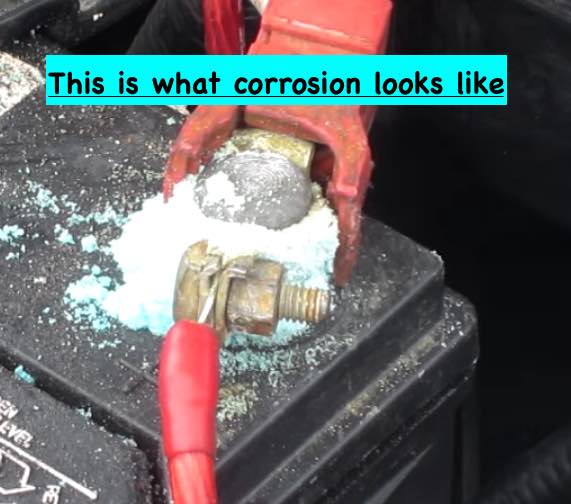




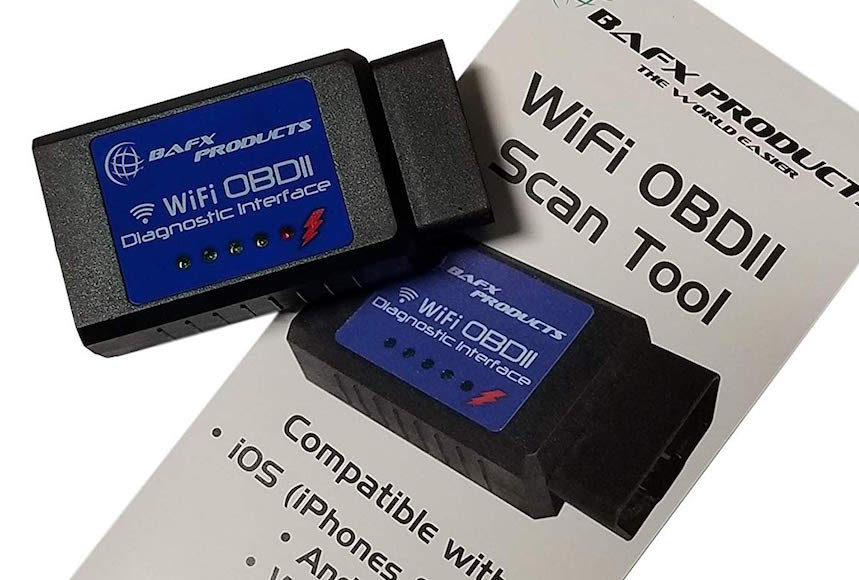
Pingback: Turn key and nothing happens and your battery is good? DIY Diagnosing Guide - AGradeTools.com
Pingback: Best Digital Tire Pressure Gauge & Filler (I asked real professionals) - AGradeTools.com
Pingback: Analog vs. Digital Multimeter (Analog? Really?) - AGradeTools.com